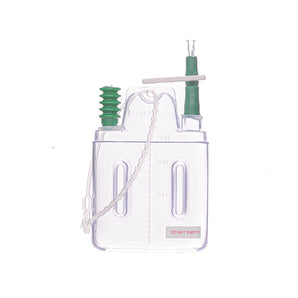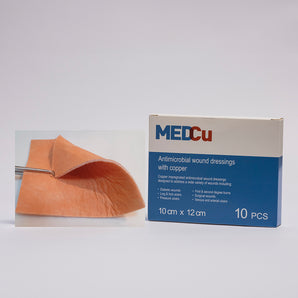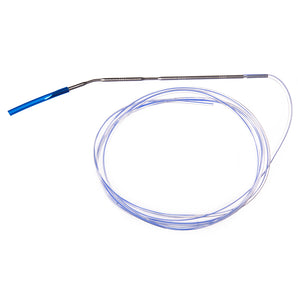When it comes to wound healing, not all wounds are created equal. Some heal swiftly, while others linger, testing our patience and resilience. Understanding which wounds take the longest to heal can help us better manage expectations and care strategies.
In our journey to explore wound healing, we find that chronic wounds, such as diabetic ulcers and pressure sores, often top the list. These wounds can be stubborn due to factors like poor circulation or underlying health conditions. Advanced wound care techniques, including specialised dressings, aim to create an optimal healing environment, yet these wounds still require time and careful management.
By delving into the intricacies of wound healing, we can appreciate the complexity of the body's repair mechanisms and the innovations in surgical techniques that aid recovery. Let's unravel the factors that influence healing times and how we can support the process effectively.
Key Takeaways
-
Chronic wounds, such as diabetic ulcers and pressure sores, have the longest healing times due to factors like poor circulation and underlying health conditions.
-
Advanced wound care, employing techniques like specialised dressings and negative pressure wound therapy, is crucial for managing these stubborn wounds.
-
The severity of a wound, infection presence, and underlying health conditions are key factors affecting the healing timeline.
-
Venous leg ulcers, diabetic ulcers, and pressure sores are wound types with notably prolonged healing, requiring tailored interventions for better recovery.
-
Early diagnosis plays a vital role in wound management, enabling timely intervention and use of advanced wound care products to prevent complications.
Types Of Wounds
Understanding the types of wounds is key to effective wound care. Each type has unique characteristics that dictate the optimal treatment approach.
Acute Wounds
Acute wounds are injuries that occur suddenly and typically heal within a predictable timeframe. These include cuts, burns, and abrasions. Acute wounds often result from trauma or surgical procedures. Proper management, such as cleaning and dressing, ensures quicker recovery and minimises complications. For acute wounds, advanced wound care products, such as hydrocolloid or antimicrobial dressings, can enhance healing by maintaining a moist environment and preventing infection. Antimicrobial dressings are particularly useful in managing bacteria in wounds, reducing the risk of infection.
Chronic Wounds
Chronic wounds, unlike acute ones, persist over longer periods and resist standard healing methods. Common types include diabetic ulcers, venous leg ulcers, and pressure sores. These wounds arise from underlying conditions like poor circulation or diabetes. They demand specialised care and interventions to heal effectively. Advanced wound care techniques, including silver dressings and hydrogels, are pivotal in this context. Silver dressing for wound care provides antimicrobial effects that help manage infection in chronic wounds. Creating an optimal healing environment with advanced products improves patient outcomes significantly.
Factors Affecting Healing Time
Various components contribute to how long a wound takes to heal. From the nature of the wound itself to external and internal influences, understanding these factors helps us manage and optimise healing processes effectively.
Severity Of The Wound
The depth and size of a wound significantly impact healing time. Larger or deeper wounds, like those from surgeries or accidents, require more extensive tissue repair. Compared to minor cuts or abrasions, these wounds demand more collagen formation and reorganisation. Wounds that involve the loss of skin, nerve tissue, or even muscle take longer. Severe burns and traumatic injuries often top the list for extended healing durations.
Presence Of Infection
Infection can dramatically slow healing or halt it altogether. Bacteria in wounds provoke inflammatory responses, which can disrupt normal healing phases. Antimicrobial dressings, such as silver wound dressings, are often used to mitigate this. By utilising dressings with antimicrobial properties, we can keep infections at bay, allowing tissues the chance to recover without bacterial interference. Our focus remains on preventing infections through advanced wound care products that offer added protection, reducing the risk of prolonged healing.
Underlying Health Conditions
Chronic conditions like diabetes or vascular disorders can impede healing significantly. Poor circulation reduces nutrients and oxygen to the wound site, which slows repair. Diabetes, for instance, can decrease the efficiency of the body's immune response. For patients with these conditions, specialised care with products like hydrogel wound dressings is crucial. These advanced dressings maintain moisture and offer medicated relief, tailored to complicated healing needs. Understanding a patient's health can guide us in choosing the right wound care protocol, promoting effective and timely repair.
Wound Types With Prolonged Healing
Certain types of wounds can take an exceptionally long time to heal. These are often chronic and result in more extensive care requirements to promote effective healing. For those managing such wounds, understanding their nature and requirements can significantly enhance recovery.
Venous Leg Ulcers
Venous leg ulcers, typically found on the lower legs, occur due to poor blood flow from the veins. These wounds are stubborn due to inadequate circulation, often resulting from conditions like varicose veins or previous blood clots. Compression therapy is commonly recommended to improve blood flow, which aids in healing. However, it's crucial to use appropriate dressing materials, such as hydrocolloid or antimicrobial wound dressings, to manage exudate and create an optimal healing environment. Advanced wound care products can also make a significant difference in reducing healing time and preventing infection, which is always a risk with open wounds.
Diabetic Ulcers
Diabetic ulcers, often found on the feet, are notorious for their prolonged healing due to the complex interaction of high blood sugar levels with the body's healing mechanisms. Poor nerve function (neuropathy) in diabetes means these wounds might not be felt early, leading to advanced stages before treatment starts. Regular inspection and prompt treatment are vital. Silver wound dressings offer antimicrobial protection, while hydrogels maintain a moist environment, supporting tissue repair. Patients with these ulcers should have ongoing care from healthcare providers familiar with advanced wound care techniques to prevent complications.
Pressure Sores
Pressure sores, or bedsores, develop from prolonged pressure on the skin and are common in individuals with limited mobility. These ulcers typically appear on bony areas, such as the heels or lower back. Regular movement and repositioning can help prevent these sores. However, once developed, they can take a long time to heal. Wound care products, including advanced dressings like hydrogel and silver dressings, can provide essential benefits by absorbing exudate, supporting new tissue growth, and preventing infection. These products allow for extended wear, which can help manage the wound more effectively between changes.
Understanding and addressing the unique needs of each wound type is critical for successful outcomes. Advanced wound care practices and products provide significant advantages in managing these challenging wounds, but it's important to adhere to medical advice specific to each scenario.
Treatment And Management Strategies
Addressing chronic wounds, such as diabetic ulcers and pressure sores, involves a combination of medical interventions and home care practices tailored to create ideal healing conditions.
Medical Interventions
Advanced wound care plays a pivotal role in treating chronic wounds. Silver wound dressings and antimicrobial dressings help prevent infection and promote healing. Silver dressings release antimicrobial agents upon contact with wound exudate, reducing bacterial load. This property proves crucial in dealing with infected wounds. Hydrogel wound dressings maintain a moist environment, which facilitates autolytic debridement, aiding in the removal of necrotic tissue.
Healthcare professionals employ medical devices and pharmaceuticals to enhance treatment efficacy. Devices like negative pressure wound therapy (NPWT) improve circulation, which speeds up healing. Pharmaceuticals can address underlying health issues like poor circulation or diabetes, supporting overall wound management. If you're interested in advanced solutions, consider exploring Dynamed's range of wound care products here.
Home Care Practices
Effective home care complements medical interventions. Cleaning wounds with saline solution minimises the risk of infection while maintaining hygiene. Monitoring for signs of infection, such as increased redness or swelling, enables timely medical intervention. Simple practices such as repositioning can alleviate pressure, preventing sore development. Elevation of the affected area can reduce swelling, improving healing conditions.
Proper nutrition is also vital. A diet rich in protein, vitamins, and minerals supports tissue repair. Staying hydrated aids circulation, which is essential for healing. By maintaining a balanced diet, we can contribute significantly to the recovery process.
Combining professional care and effective home practices forms a comprehensive strategy for managing and treating chronic wounds, leading to improved patient outcomes.
Importance Of Early Diagnosis
Early diagnosis enhances wound healing by allowing timely intervention and appropriate treatment. Identifying wounds, particularly chronic ones like diabetic ulcers or pressure sores, in their initial stages prevents complications and promotes recovery. Without early detection, even minor issues could escalate into severe conditions requiring more extensive medical interventions.
Spotting the warning signs is crucial. For instance, recognising swelling or unusual odour in wounds can indicate infection, prompting immediate medical attention. Pressure sores might begin as discoloured skin, while diabetic ulcers could present as small cuts that do not heal. By diagnosing these signs early, healthcare providers can customise treatments using advanced wound care products such as antimicrobial or silver dressings.
Advanced diagnostics including imaging technology and laboratory tests support early detection. Imaging might help evaluate the severity and depth of the wound, while lab tests can identify underlying infections or bacteria. These tools assist in tailoring treatment regimens and enhancing the efficacy of interventions.
Incorporating such techniques, early diagnosis empowers us to mitigate risks associated with wound care. Dynamed's range of advanced wound care products benefit patients by providing immediate solutions tailored to specific wound types. Understanding how silver and antimicrobial dressings can fit into treatment plans ensures optimal healing outcomes.
Engaging in early diagnostic practices protects long-term health. By diagnosing and treating promptly, complications that surface from neglected wounds can be avoided. This proactive approach is vital in ensuring that wounds are managed effectively and patient well-being is prioritised.
Conclusion
Understanding the intricacies of wound healing is crucial for effective treatment and management. Chronic wounds like diabetic ulcers and pressure sores demand specialised care due to their complexity and prolonged healing times. By utilising advanced wound care techniques and products, we can enhance the healing process and improve patient outcomes.
It's essential to recognise the factors that impede healing, such as infections and underlying health conditions, and address them promptly. Early diagnosis plays a vital role in preventing complications, allowing for timely interventions. By adopting a comprehensive approach that combines medical and home care practices, we can support the healing journey and ensure better recovery for all wound types.
Visit Dynamed Pharmaceuticals
Phone: 0861 00 00 43
Website: dynamed.co.za
Email (Sales): sales@dynamed.co.za
Email (Info): info@dynamed.co.za
Google Maps: Find us here
Frequently Asked Questions
What factors influence the healing time of wounds?
Healing time is influenced by wound severity, presence of infection, and underlying health conditions. Larger or deeper wounds require more tissue repair, and infections can slow healing. Chronic conditions like diabetes and vascular disorders can also impede healing, thus requiring specialised care and advanced dressings.
How do acute and chronic wounds differ in healing?
Acute wounds, such as cuts and burns, typically heal within a predictable timeframe if properly managed. Chronic wounds, like diabetic ulcers and pressure sores, resist standard healing methods, requiring advanced care and specialised dressings to heal effectively.
Why do diabetic ulcers take longer to heal?
Diabetic ulcers, usually found on the feet, are complicated by high blood sugar levels, which impair healing processes. Diabetic patients also face challenges like poor circulation and nerve damage, making regular inspection and advanced wound care essential for recovery.
What role do antimicrobial dressings play in wound care?
Antimicrobial dressings prevent infections and promote recovery by managing bacteria levels within wounds. They are crucial for both acute and chronic wound care, helping create an environment conducive to healing and reducing risks of complications.
How can chronic wounds like venous leg ulcers be managed?
Chronic wounds such as venous leg ulcers, caused by poor blood flow, require treatments like compression therapy and appropriate dressings. These strategies, alongside regular monitoring and care, help enhance healing and mitigate infection risks.
What are advanced wound care techniques?
Advanced wound care techniques involve the use of specialised products like hydrocolloid, silver, and hydrogel dressings, and medical devices such as negative pressure wound therapy (NPWT), which aid in creating optimal healing conditions and improving patient outcomes.
Why is early diagnosis important in wound healing?
Early diagnosis allows for timely intervention and treatment, thus preventing complications and promoting recovery. Recognising warning signs like swelling or unusual odour is crucial for prompt medical attention and effective wound management.
How do medical devices enhance chronic wound treatment?
Medical devices like NPWT aid in maintaining optimal healing environments by promoting tissue drainage and circulation. They, alongside pharmaceuticals, address underlying health issues, improving the efficacy of treatment and supporting accelerated healing for chronic wounds.







